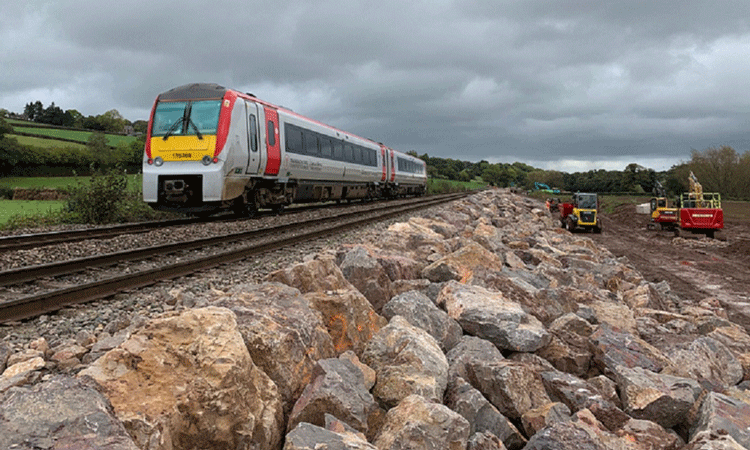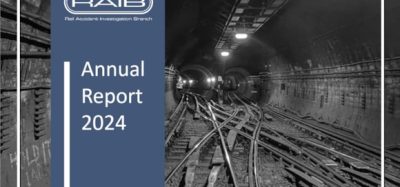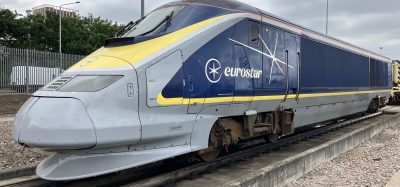Network Rail installs ‘rock armour’ to protect flood-prone sections of railway
Posted: 24 November 2021 | Global Railway Review | No comments yet
Network Rail has installed 8,000 tonnes of ‘rock armour’ on the Hereford and Abergavenny rail line to protect the future of flood-prone borders’ railway and minimise passenger disruption.


Credit: Network Rail
A multi-million-pound investment has taken place on the railway between Hereford and Abergavenny to combat bad weather and minimise passenger disruption.
An increase in extreme weather, over the past two years, has seen several washouts on the Marches Line, causing short notice closures, lasting up to seven days.
Closing this vital stretch of railway between Newport and Shrewsbury has a big impact on passengers and freight as many people use this line to reach other parts of the UK, including: Manchester, Birmingham, and North Wales.
To minimise future disruption and delays, Network Rail engineers have installed half-a-mile of rock armour and refurbished culverts (under track drainage) between Hereford and Abergavenny; the same concept that has proved a huge success on a flood-prone stretch of railway in the Conwy Valley.
Ten trains have been used to carry more than 8,000 tonnes of rock, locally sourced from Machen Quarry, in South Wales, to the work site. Using trains meant the project’s carbon footprint was significantly reduced – the equivalent journey by road would have used 400 lorries. Sourcing the material this quarry has not only reduced the carbon footprint of the project, but has shown Network Rail investing into the local economy.
The £4 million work began in May 2021, with the first phase of the project completed in November 2021. Further work will commence in Spring 2022, with more rock armour to be laid to future-proof the line against climate change.
Network Rail worked collaboratively with local landowners, Natural England, and the Environment Agency to ensure that all necessary steps were taken to reduce impact on natural wildlife and the environment.
Alex Hinshelwood, Programme Manager at Network Rail, said: “We know that rock armour works, as we’ve seen it in action on the Conwy Valley Line – where recent flooding there left the line closed for hours, instead of days. This is a huge benefit for passengers with less disruption to their journeys. We are dedicated to improving resilience across the Wales and Borders route and what we’ve installed here will protect the future of this stretch of railway for many years to come.”
This project is the most recent addition in a long line of Network Rail schemes dedicated to facing climate change and improving resilience across the whole Wales and Borders route, including raising Black Bridge out of a flood zone, landslip defence on the Severn Estuary, and rock armour installation on the Conwy Valley Line.
Global Railway Review Autumn/ Winter Issue 2025
Welcome to 2025’s Autumn/ Winter issue of Global Railway Review!
The dynamism of our sector has never been more apparent, driven by technological leaps, evolving societal demands, and an urgent global imperative for sustainable solutions.
>>> Read the issue in full now! <<<
Related topics
Funding & Finance, Infrastructure Developments, Operational Performance, Passenger Experience/Satisfaction, Safety, Sustainability/Decarbonisation, Track/Infrastructure Maintenance & Engineering
Related organisations
European Environment Agency (EEA), Natural England, Network Rail







